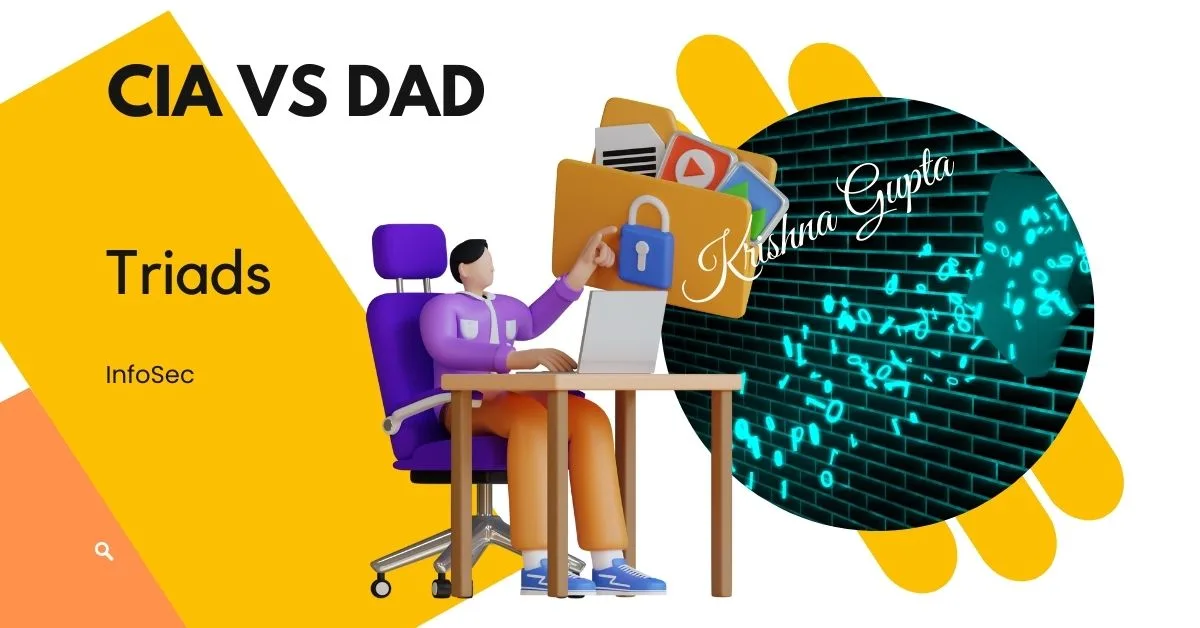Decoding the Security Triads: CIA vs. DAD
In the shadowy realm of information security, two acronyms reign supreme: CIA and DAD. But their meanings are far from the world of espionage and parenthood. In this realm, they represent the pillars of data protection and, conversely, the strategies of malicious actors.
The CIA Triad: Guardians of Information Integrity
Confidentiality, Integrity, and Availability are the three musketeers of data security, forming the CIA Triad. Their purpose is simple: to ensure that information remains confidential (only authorised users can access it), integral (accurate and untampered), and available (accessible when needed).
Advantages:
- Comprehensive framework: The CIA Triad covers all core aspects of data security, providing a solid foundation for building robust defences.
- Simplifies communication: Its clear and concise principles make it easier to discuss and implement security measures across different levels of an organisation.
- Focus on user needs: Availability ensures information is accessible to authorised users, making it user-centric.
Disadvantages:
- Oversimplification: Real-world scenarios can be more complex, requiring additional considerations beyond the basic CIA principles.
- Evolving threats: The sophistication of cyberattacks demands continuous adaptation and expansion of the security framework.
- Limited scope: The CIA Triad primarily focuses on data and systems, not encompassing broader aspects like physical security or human behaviour.
Where is it used?
The CIA Triad is ubiquitous in information security. It guides:
- Security policy development: Organizations use it to build policies and procedures that protect sensitive information.
- System design and implementation: Security features are integrated into systems based on the CIA principles.
- Risk assessment and mitigation: Identifying vulnerabilities and implementing controls are guided by the CIA Triad’s goals.
Who is it not for?
While the CIA Triad forms a strong foundation, it’s not a one-size-fits-all solution. It may not be the best fit for:
- Highly specialised systems: Specific domains with unique security needs may require tailored frameworks.
- Resource-constrained environments: Small businesses or organisations with limited resources might struggle implementing comprehensive CIA-based controls.
- Physical security concerns: The CIA Triad focuses on digital security; physical security threats require additional considerations.
Enter the DAD Triad: The Malicious Counterpart
Disclosure, Alteration, and Destruction/Denial are the infamous three of the DAD Triad. They represent the attacker’s perspective, highlighting their potential avenues to breach the CIA Triad:
- Disclosure: Stealing data through hacks, malware, or social engineering.
- Alteration: Manipulating data for fraud, extortion, or sabotage.
- Destruction/Denial: Rendering systems or data inaccessible through denial-of-service attacks or data deletion.

History:
The CIA Triad has been around for decades, while the DAD Triad emerged as a counterpoint in recent years. Understanding both sides strengthens security by allowing defenders to anticipate and neutralise attacker tactics.
The Value of Both Triads:
Knowing both the CIA and DAD Triads is crucial for robust security. The CIA Triad provides the shield, while the DAD Triad reveals the potential spears aimed at it. By understanding both sides, organisations can build better defences, implement appropriate controls, and stay ahead of the ever-evolving landscape of cyber threats.
Remember, information security is not a static game. Understanding and adapting to both the CIA and DAD Triads will keep your data safe and sound in the face of today’s digital adversaries.